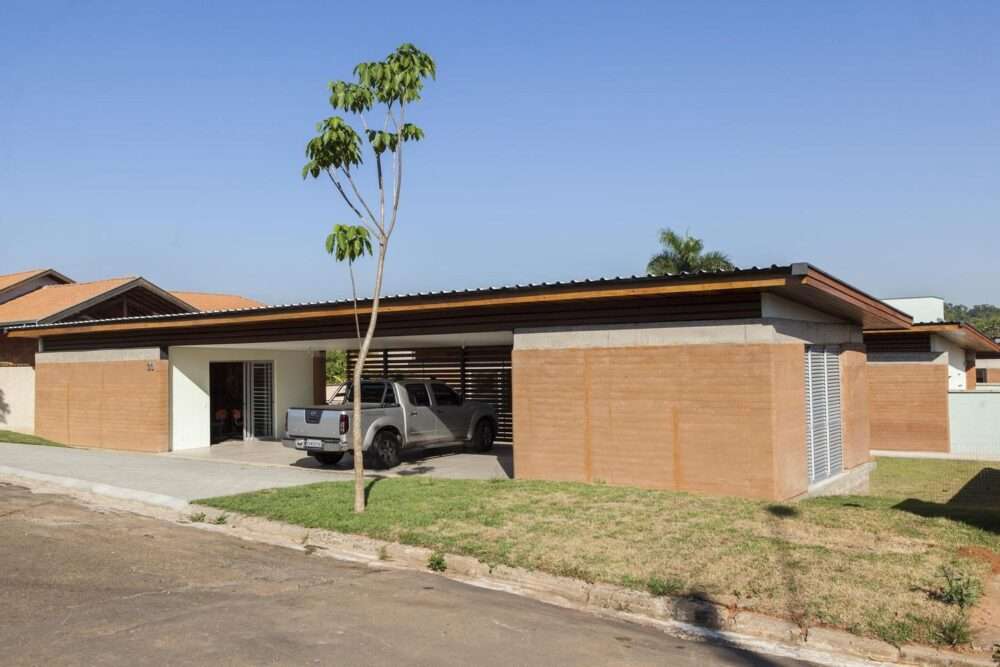Rock earth walls are once again gaining prominence in Brazil as a low-impact,
sustainable and economical solution.
Known in Portuguese as taipa, it is a primitive building system that compacts earth in wooden boxes until it reaches an ideal density that allows for a resistant and long-lasting structure.
Among the many benefits of rammed earth, its raw materials are abundant,
which enables the use of the same soil from the construction site,
thus reducing CO2 emissions as it does not require long-distance transportation.

In addition, it is non-toxic, provides a healthy environment in which the wall “breathes”,
is fire retardant, and has excellent thermal and acoustic insulation.
For example, in Arquipélago Arquitetos’s House in Cunha,
the main walls are made of stony earth.
Using an original formwork system that avoids drilling and has developed a more efficient construction site,
modular components can easily be disassembled and reassembled.

In addition, the tapered earthen structures are attached to a concrete belt that serves as a support for the roof metal structure.
The adjacent panels shall be sufficiently rigid to support the full load weight of both the beam and the roof.
The Brazilian company Argus Caruso decided to build AA House,
with earth ramming, in order to make the house breathe.
Given the high humidity condition of Ubatuba, the broken ground couldn’t be better.
Using several techniques, the slab foundation is in hyperadobe;
The walls are wattle-and-daub and the structural wall is in rocky ground.

Building a house with natural materials
For the architects, the top priority was to build a house with natural materials,
ideally taken from the surroundings, but with a great finish.
The straight, smooth walls completely break the paradigm that a crooked earthen house is always crooked or poorly finished.
All dredging soils raised from the excavation of the foundations can be used for the construction of the earthen walls.
In fact, this concept was used in the House in Mantiqueira,
designed by Gui Paoliello where the material was removed from the ground itself.
It used to establish three volumes (boxes) for the subject of the program built with 30 cm (11.8-inch) thick earthen walls.
and in the case of Guesthouse Paraty, which was designed by CRU! Architects,
the 6.3-meter (21-foot) red floor wall served as soundproofing.
As the site is on a slope, leveling was necessary. In this example,
the raw material has also been used without the need for additional energy.
In fact, the same formwork used for ramming soil was later applied to the roof structure.

Other features that architects seek to prioritize in projects that adopt this ancient technique are color and texture.
For example, in Casa Bosque at Estúdio OLO, an orange-clad structural wall serves as an element that fits the project’s intense color palette,
That goes from the crimson kitchen to the blue-leather Sérgio Rodrigues armchair to the vibrant bookshelves at the end of the room.
For more architectural news


 العربية
العربية